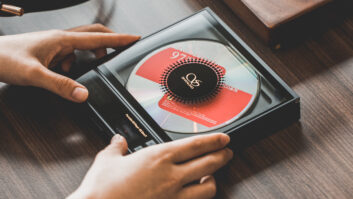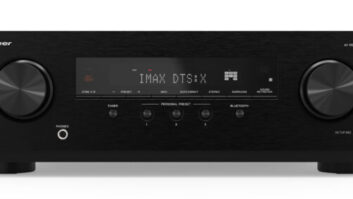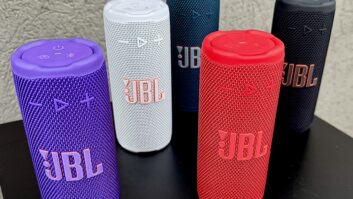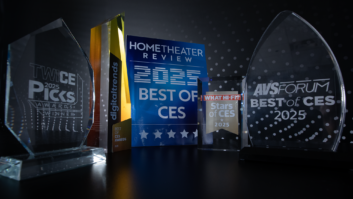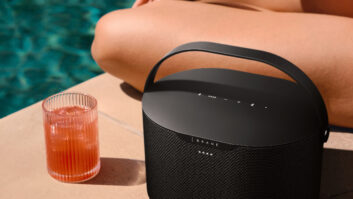Internet audio portables will soon evolve into player/recorders whose batteries will operate for up to 30 hours in playback mode, technology developers told TWICE.
Portable player/recorders will eliminate the need to use a PC to store digital music before transferring it to a portable device, and for that reason, “manufacturers are very interested,” said John Van Scoter, Internet audio business VP at Dallas-based Texas Instruments. Although consumers will be able to connect the portables directly to a CD player or other sources to record music, the portables won’t be able to download files directly from the Internet.
To bring portable player/recorders to market, TI has developed its first Internet audio player/recorder reference design, which it is marketing on an OEM basis to branded suppliers of consumer electronics and PC-related products. The first portable player/recorders incorporating TI’s reference design will be on the market by the end of this year or early next, perhaps initially in overseas markets, Van Scoter said.
Another technology developer, startup PortalPlayer of Santa Clara, Calif., has also developed a portable player/recorder reference design, which it expects to be available in branded products in the fourth quarter in the United States and overseas. It will use a single AA battery operating from eight to 10 hours in play-only mode, depending on a file’s compression level, said marketing VP Michael Maia.
The two companies’ platforms can also be used in home player/recorders, and both use programmable processors that are field-upgradable to add future support for additional compression formats and digital rights management (DRM) technologies.
Existing portables, even those with programmable processors, can’t be field-upgraded to add recording capability, Van Scoter noted, because an audio input, new function buttons and an A/D converter (if the audio input is analog) would have to be added to the device.
The new platforms will also begin fulfilling the potential of Internet audio portables to deliver long battery life because they feature no moving mechanical parts. TI’s portable player/
recorders, for example, will deliver up to 30 hours of playback time on alkaline batteries, Van Scoter said. That compares to the five- to 12-hour playback times of existing models that use one to two AA alkalines, he pointed out.
Existing portables’ playback times are equal to that of many existing headphone CD players, yet far short of the 50 hours delivered by some portable CDs.
In 2001, Internet portables with battery lives up to 70 hours will be available, he added.
On a single AA alkaline, PortalPlayer’s reference design will deliver eight to 12 hours of playback time, depending on compression levels, said Maia.
To deliver recording capability, the TI platform will make it possible to build portable player/recorders with an analog audio input and built-in A/D converters to take the analog output from any audio product, convert it to digital, and encode it in the compression formats supported by the devices. At their discretion, OEM customers would also be able to include a digital input to record directly from a CD player’s digital output, said Randy Cole, chief technology officer for TI’s Internet audio business. However, the voluntary 1.0 specification developed by the Secure Digital Music Initiative (SDMI) doesn’t allow for portable devices with direct digital inputs to non-PC devices, he noted.
Although both platforms support the decoding of multiple formats, they will initially support encoding in only the MP3 format, but both companies plan quick running changes to allow encoding in additional formats.
TI’s platform, for example, supports playback of AAC (Advanced Audio Coding), Sony’s ATRAC3, Lucent’s ePAC, Liquid Audio, MP3, Q Design (the audio codec used in Quick Time), RealAudio G2, Twin VQ (used in portables in Japan) and Windows Media Audio (WMA).
Initial production runs will support MP3 encoding, and followup runs later this year will add AAC decoding, said TI’s Cole.
PortalPlayer’s platform will support playback of AAC, MP3, WMA and Q Design. MP3 encoding will be supported when production begins in the third quarter, and in the fourth quarter, one or two additional decoders will be added as a running change, Maia said.
The TI-based portable recorders will also be able to support multiple SDMI’s Phase II screening technology, which is still under development. Phase II technology will detect watermarks in digital files and on future prerecorded digital discs to prevent unauthorized copying of these discs and files.
Phase II screening technology, said Van Scoter, will fit in the “MIPS budget” of TI’s next-generation 150 MIPS (millions of instructions per second) programmable processors.
In play-only portables, Phase II screening technology will not consume internal processing power because the technology would be incorporated in recording software residing on a PC’s hard drive.
Both platforms’ can also be used in home-component-style player/recorders or in shelf systems. PortalPlayer expects such products using its platform will be available in the first half of 2001.
Sensory Science is one of the first companies to adopt PortalPlayer’s platform, but Sensory declined to outline its plans for portable or home player/ recorders.




